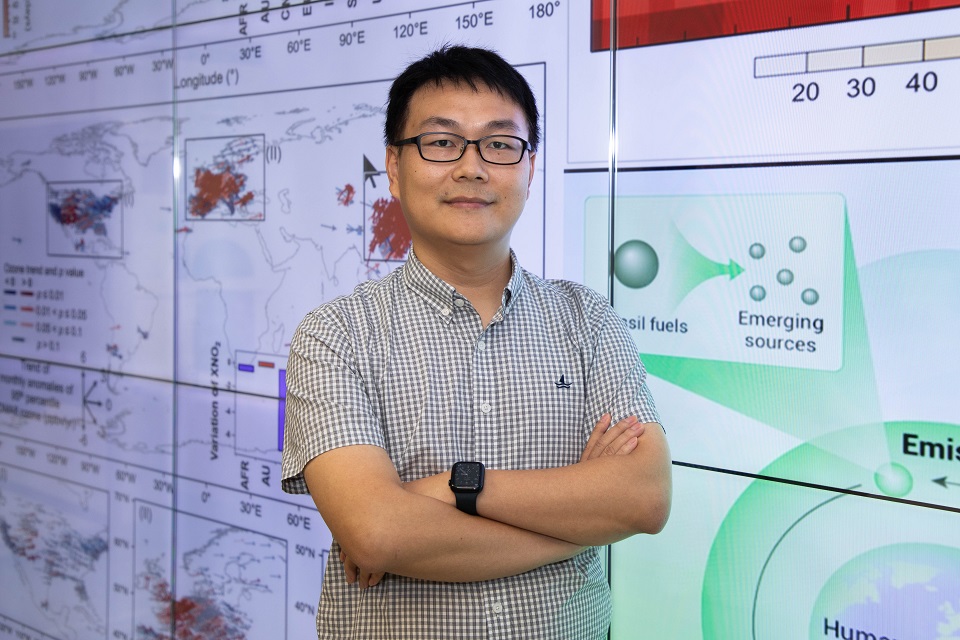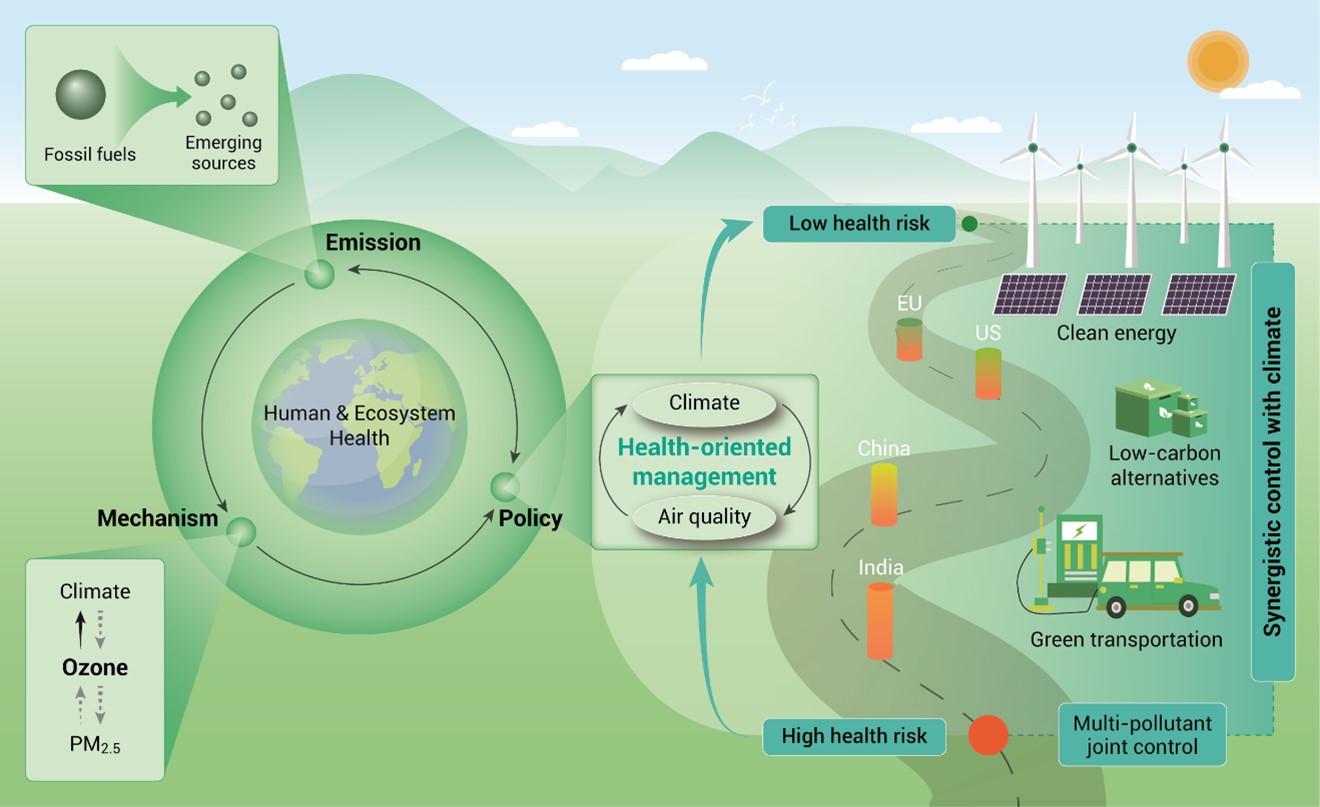Discover HKBU
The Ozone Awakening
31 Oct 2023
Year after year, environmentalists and scientists have warned of the dire consequences if no collective action is taken to mitigate climate change. Ground-level ozone pollution is closely related to global warming. With the alarming frequency of natural calamities and extreme weather in recent years, there is a renewed sense of urgency among individuals and governments to act before planet Earth reaches its breaking point.
Academia has always been at the forefront of the environmental campaign. Dr Lyu Xiaopu, Assistant Professor of the Department of Geography, one of the research leads of an international study, “A synergistic ozone-climate control to address emerging ozone pollution challenges”, published in One Earth, explains why a synergistic ozone-climate control strategy is critical.
Dr Lyu summarises the schematics of having a joint ozone-climate control strategy: “The synergy is built on three aspects: emission, mechanism, and policy. Policy is a response not only to emissions but also to the mechanisms of ozone-climate interactions that are regulated by emissions. A health-oriented management system is proposed to integrate climate and air quality actions through promoting clean energy, green transportation, and low-carbon alternatives. Being at different stages of social development and environmental management, China, India, the US and the EU all have to fulfil their respective obligations in the formulation of this strategy.”
“Good Up High; Bad Nearby”
To ensure ease of understanding for everyone about the ground-level ozone pollution, Dr Lyu cited the phrase “Good Up High; Bad Nearby.” “There are two types of ozone in the atmosphere. We have the upper stratospheric ozone, or the “good” ozone which protects us from the ultraviolet radiation from the sun, versus what our study addresses, the ground-level ozone or the “bad” ozone, which comes from complex photochemical reactions in the part of the air right next to the ground. This is characterized by a hazy, brownish-gray appearance in the atmosphere, or what is scientifically known as the photochemical smog, a mixture of pollutants that are harmful to the environment and people’s health,” Dr Lyu elaborates.
Translation from science to policy
The air pollutants that exacerbate the “bad” ozone largely come from the human-made emissions, same for greenhouse gases. To curb their emissions, change needs to happen at a policy level. According to Dr Lyu, given many authors of the study are also policy advisors for the government in their respective countries or cities, this presents a precious opportunity for scientific findings to be translated into public policy. For instance, Dr Lyu and his team are working with the Environmental Protection Department of the HKSAR Government on an ozone project and are in a position to share their expert advice and policy briefs, in hopes that their ideas on ozone-climate control can be applied in future projects.
Translation from science to public education
“There is an encouraging trend with Hong Kong and overseas universities where talents from different disciplines work together to design courses on ecological conservation. At HKBU, our transdisciplinary approach to teaching and learning sees us collaborating across the science disciplines, such as Chemistry, Biology and the social sciences such as Geography. We will work to raise public awareness and promote informed action on climate change and ground-level ozone pollution through developing tailored educational materials for a broad spectrum of audience and hosting interactive workshops, public seminars, and online webinars,” Dr Lyu continues.
A global framework to address ozone issues
In many ways, scientists are our modern day prophets. The exceptional ones will not stop until they close the gap of inaction and indifference with their continuous research efforts and advocacy. Dr Lyu notes that while the United Nations has created an International Panel on Climate Change for assessing the science related to climate change, there has yet to be an international framework for promoting ozone control.
“The global challenge is to align responsibilities and obligations among different countries and their governments. The climate penalties that result from environmental hazards are too costly for inaction, and every small step counts. As educators and scientists, we will keep hammering home this message to our students, the public and the policy makers until we have an acceptable strategy for ozone-climate synergistic control,” concludes Dr Lyu.

